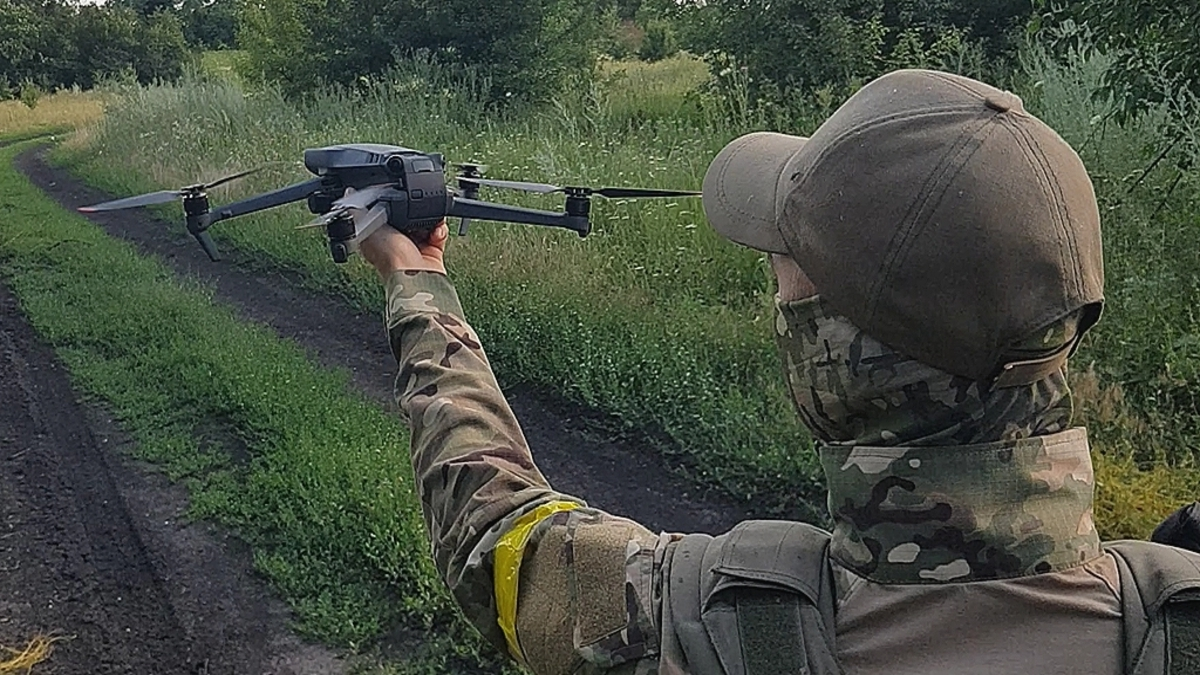Ukraine’s Security Service (SBU) and military intelligence (HUR) have opened a joint investigation following a confidential warning from Mexico’s National Intelligence Center that certain Spanish-speaking volunteers joined the International Legion with the intention of learning FPV drone techniques for criminal use back home. The probe, now expanded to include Colombian nationals, is centered on the Ethos tactical unit active in Donetsk and Kharkiv regions, where drone-operator training is most advanced.
An SBU official told Intelligence Online:
“We welcomed volunteers in good faith. But we must now recognize that Ukraine has become a platform for the global dissemination of FPV tactics. Some come here to learn how to kill with a $400 drone, then sell this knowledge elsewhere to the highest bidder.”
Case Highlight: “Águila‑7”
One individual, known by the alias “Águila‑7,” reportedly enlisted in March 2024 using forged Salvadoran documents. Instructors noted his exceptional technical understanding of electronic warfare countermeasures and thermal detection avoidance. Subsequent investigations linked him to Mexico’s elite GAFE special forces, some of whose former members have historically joined cartels, including Los Zetas.
Moreover, investigators uncovered at least three former FARC guerrillas who entered the unit under false Panamanian or Venezuelan identities—arranged via cartel-connected firms providing logistics and documentation support.
- Mexican drug cartels are now equipping drones with plastic explosives and small munitions, such as grenades. (Forbes/Mexican Federal Police)
Strategic Implications
Unintended Training Ground
Ukraine has rapidly become a testing ground for low-cost drone warfare. Its training curricula—covering drone manufacturing, electronic warfare resistance, and real-time tactical coordination—are precisely the skills that transnational criminal organizations covet.
Tactical Proliferation Risks
Cartels in Mexico and Colombia have already incorporated drones into their operations. Weaponized quadcopters and FPV systems have been deployed against rival groups and security forces, raising the urgency of preventing advanced tactical know-how from flowing into criminal hands.
Also Read: Space Force General Declares U.S. Capable of Building Space-Based Missile Defense System
Background and Wider Relevance
The war in Ukraine has accelerated FPV drone innovations and training—technologies that are increasingly accessible and attractive to non‑state actors. Analysts warn that demobilization of combat-experienced drone operators could fuel clandestine training networks globally.
In Latin America, drug cartels have been early adopters of drone technology. The Jalisco Cartel New Generation, for example, maintains its own cadre of “drone operators” who deploy explosive-equipped UAVs for tactical strikes and surveillance.
- Cartel smuggler drones have surged due to low cost and easy access to commercial models. Their use highlights the need for advanced counter-drone solutions that can address evolving threats without disrupting lawful activity. (D-Fend Solutions)
Mitigation and Countermeasures
In response, Ukraine’s intelligence services have tightened vetting procedures for foreign volunteers. Cooperation with international intelligence agencies, including Interpol and U.S. enforcement bodies, has increased to cross-check passport authenticity and screen for criminal affiliations. Units suspected of infiltration have been placed under enhanced scrutiny and surveillance.
Despite these efforts, authorities face a difficult balance: while volunteer foreign fighters provide critical manpower and expertise, the potential for knowledge transfer to criminal networks continues to complicate volunteer-based military support models.
Conclusion
The emergence of drug cartel operatives embedded within Ukraine’s drone training programs highlights the unintended risks associated with international volunteer recruitment in wartime. As drones become cheaper, more lethal, and technically advanced, the threat landscape extends beyond battlefronts and into criminal theatres worldwide. Counterintelligence measures must evolve in parallel to safeguard against illicit proliferation of battlefield expertise.
Read More: Space Force General Declares U.S. Capable of Building Space-Based Missile Defense System
FAQs
Yes. Some foreign volunteers join Ukraine’s International Legion not just to fight but also to learn FPV drone tricks. These techniques – such as flying drones with explosives or evading detection – can be used by criminal groups at home, especially in Mexico and Colombia. Authorities are now carefully examining who joins to prevent this.
Drug cartels are using drones primarily against rival gangs and local security forces. Armed drones can carry small explosives or grenades, making them a dangerous tool for criminals. This shows how quickly battlefield technology can spread to criminal networks.
Ukraine’s intelligence and military services now conduct more stringent checks on foreign volunteers. They work with Interpol and US agencies to verify identities and look for criminal links. Suspected infiltration units are closely monitored to prevent FPV knowledge from being sold to gangs.
FPV drones are cheap, easy to buy and can be very deadly. The war in Ukraine has made drone training advanced and accessible, attracting not only volunteers but also criminals. Experts warn that former combat drone operators may be secretly teaching these skills around the world, making drone crimes more common everywhere.
Continue Reading: China Expands South China Sea Network With 27 Military Bases, Some Capable of Hosting Nuclear Bombers








Leave a Reply